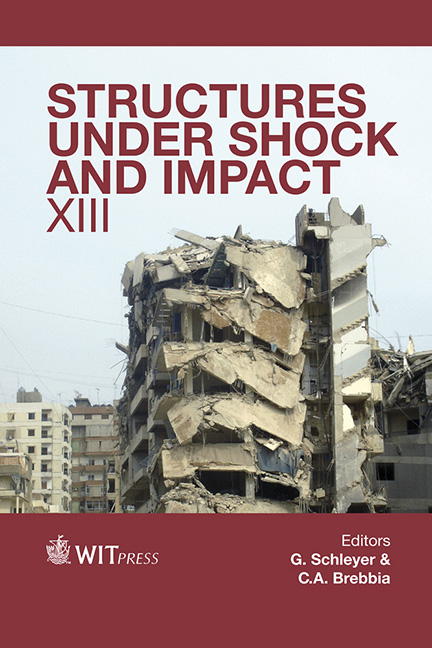Sandwich Beams With Gradient-density Aluminum Foam Cores Subjected To Impact Loading
Price
Free (open access)
Transaction
Volume
141
Pages
12
Published
2014
Size
678 kb
Paper DOI
10.2495/SUSI140341
Copyright
WIT Press
Author(s)
J. Zhang & G. P. Zhao
Abstract
The dynamic response of end-clamped sandwich beams is predicted by loading the beams at mid-span using metal foam projectiles. The sandwich beams comprise aluminum alloy face sheets and aluminum foam cores. The aluminum foam cores, having identical areal density, exist in homogeneous core, low-high gradient-density core or high-low gradient-density core. Two-dimensional (2D) finite element (FE) models were created from tomographic images of the foam cores, which represent the cell shape and geometric distribution of the real foams. A quasi-static compressive test was carried out on a MTS machine for homogeneous aluminum foam core to obtain the mechanical properties of the gradient-density foam cell wall. A uniformly distributed pressure versus time history is employed to simulate a shock impulse involving high-speed impact of aluminium foam projectiles. Two deflected shapes of the sandwich beams are found to be bend dominated mode and stretch dominated mode according to the different initial impulse. The sandwich beams with different densities foam cores outperform monolithic solids of equivalent weight in the bend dominated domain. The benefits diminish at large deflections, as the response becomes stretch-dominated. In bend dominated domain, the sandwich beam with homogeneous foam cores shows smallest mid-point deflection of back face sheet, while smallest average compressive strain of aluminum foams cores occurs in sandwich beams with high-low gradient-density foam cores. Keywords: cellular solid, impact loading, blast resistance, dynamic simulations.
Keywords
cellular solid, impact loading, blast resistance, dynamic simulations.





